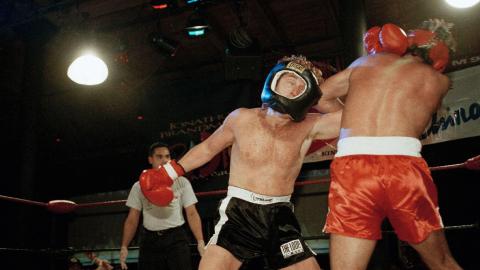Davy Crockett: Biography
Davy Crockett was a hero and statesman from the backwoods of Tennessee. His independence and simple moral thinking have made him the legend that typifies the Spirit of the American Frontier.
David Crockett was born on 17 August 1786 in Greene County, Tennessee. He was the fifth of the nine children of John Crockett and Rebecca Hawkins. The family moved to Morristown in the 1790s and built a tavern there, which has now been turned into a museum dedicated to Crockett.
Davy received no more than six months of schooling in his life as he didn't start until the age of 13. He later ran away after he had a fight with the school bully and feared a beating from his father. He was a strong boy and took a job driving cattle to Virginia, then did similar work in Baltimore.
Returning home at 16, he found his family in debt, so he worked for his father's creditor.
He excelled as a marksman, winning competitions and distinguishing himself as a hunter in Lincoln County, where he moved with his new wife Mary Polly Finley in 1806.
The couple had two children, with John Wesley Crockett being born on 10 July 1807, followed by Margaret Finley 'Polly' Crockett in 1812.
Crockett cleared and farmed a holding, supplementing his income by hunting until 1812, when the Creek Indians opened hostilities, and Crockett volunteered to fight for the American Militia.
His commanding officer was General, later President, Andrew Jackson. Returning from battle, Crockett found his wife Polly dying - a year later he married Elizabeth Patton in 1815 and moved to Lawrence County. They had three children called Robert, Rebecca and Matilda.
Crockett helped lay out the county and became one of its first commissioners and justice of the peace. He was elected to the Legislature in 1821. His keen wit and straight backwoodsman ways appealed to the inhabitants of the Frontier. He was elected to Congress in 1828, was defeated in 1831 but won again in 1833.
On his defeat in 1835, Crockett left his family and went to Texas. He fought in the Battle of the Alamo, intending to wrest Texas - after an appeal from William Barret Travis, the commander in charge - from the control of the Mexican General Santa Anna. It was a massacre and Crockett died, along with 189 Texans and 1,600 Mexicans.
The only survivors on the Texan side were one woman, one man, and a child. Two eyewitness survivors of the Alamo confirm that Crockett did die in the battle.
Susanna Dickinson, the wife of an officer, said that Crockett died in the assault and that she saw Crockett's body between the long barracks and the chapel, and Travis' slave Joe said he also saw Crockett lying dead with the bodies of slain Mexican soldiers around him.
The publication of 'With Santa Anna in Texas: A Personal Narrative of the Revolution' in English in 1975, originally written by a Mexican officer who claimed to be present at the battle, caused a stir in the US as it clamed Crockett didn't die there.
However, no other sources have made this claim and Crockett became a legendary figure. By the 19th century he had largely been forgotten but his legend was reborn in the 1950s.
Walt Disney had reached an agreement to create weekly one-hour programmes for ABC in exchange for building his theme park. The focus of this show was historical figures and Crockett was the subject of three episodes. The show introduced his legendary coonskin cap and was extremely popular.
By 1955, these episodes were turned into a feature-length film, with Americans purchasing $300 million worth of Crockett merchandise by the end of the year - making Crockett the country's most famous frontiersman.
In recent years, focus has been on the Alamo rather than Crockett. The last actor to portray him was Billy Bob Thornton in the 2004 film 'The Alamo'.
















